Week 14: Kashgar
–
–
On our last day in Turpan we headed to the Emin Minaret, built in 1777 by the head of the Turpan prefecture. The 37m high tower and accompanying building are constructed out of mud bricks and while you can get to the top of the building you can’t go inside the minaret. That afternoon we got on a 22 hour train to Kashgar, the last major city in Xinjiang/China before you hit Central Asia. We arrived on a Saturday along with a whole lot of other tourists who were timing their visit to coincide with the Sunday market.
We started our Sunday in Kashgar at the Livestock market, where people come to buy and sell sheep, goats, cows and donkeys. It was a dusty mayhem of animal noise and bustle as men sheared sheep, argued over prices and animals made their discomfort known. The sheep for sale were the local variety known as fat tailed sheep for the lump of fat hanging off their backsides, and in the process of evaluating the worth of a sheep the men would fondle the bottoms in a most indecent way. Those who had a lot of sheep for sale often tied them together by their necks with every sheep facing 180 degrees in the opposite direction to those on either side (hard to explain, look at the photos). Next to the area where sheep were tied up was an area of complete chaos by the end of the day, where every person with a few sheep to sell wandered around with them tied to a leash. We saw one very lost old man with a lone sheep who broke my heart. He was completely out of his depth and struggling to make eye contact with buyers, while protectively shielding the sheep’s head from the surrounding chaos. We almost came away with a lone sheep and an adopted grandfather.
In the donkey section men wandered around with their animals and prospective buyers checked them out by riding them, prising open their mouths to look at teeth and squeezing meaty backsides. Some of the donkeys were feisty little things and you could see buyers move away when an animal wouldn’t do as it was told. One donkey had been tied to a cart but simply pulled the cart along behind it when it wanted to move. Every now and again one donkey would start braying and soon enough a whole chorus would join in, just like babies crying. There was a lady selling a donkey and once again we would have loved to know her story because she was the only woman we saw buying or selling livestock. Nobody seemed to be paying her much attention but when we went back later in the day she wasn’t there anymore, hopefully she sold at a good price.
Goats weren’t as common though those that were for sale were near the sheep, tied together in long lines of bleating animals. Cows had their own section, with a solid framework provided to tie them to. On the way in there was the Ferrari of cows, a bull of such gigantic proportions that it must have made buyers drool and curse their limited finances. It truly was a monster. Cows were unloaded from trucks in a most inelegant way. The tailgate was lowered and the animals were unwillingly pulled from the tray by the rope around their neck, some of them protesting pretty effectively until 3 men helped with the pulling. It’s quite a jump for a cow to come down off some of those trucks and I remember in a previous visit a cow breaking its leg in the fall.
We spent most of the day at the animal market until we were so covered in dust that a shower became a priority. After washing the dust and animal poo off us we headed to the Sunday market, a massive convergence of buyers and sellers which must be one of the biggest markets in Asia, if not the world. The market actually happens every day which is why we focused on the livestock market, but Sunday is busiest with an extra 50,000 people coming to Kashgar to buy and sell. If something exists then I’d say it’s for sale at the Kashgar Sunday market.
On Monday morning we left for a 2 day trip to Karakul Lake, toward the border with Pakistan. Actually it’s also near the border with Tajikistan and Afghanistan though there is no crossing into Afghanistan and the Tajik border is closed to all apart from Chinese and Tajik nationals. We tried to go along the road toward the Khunjerab Pass (Pakistan) but the official guarding the checkpoint wouldn’t be swayed by my smiling pleas. It was a matter of safety and Pakistan is a “messy” place at the moment. I protested that we were always going to be within China and surely he knew that China was a completely safe place? He laughed, agreed, but still said no. Oh well, it was worth a try.
That was in Tashkurgan on Tuesday morning, we spent Monday night at Karakul Lake, at 3,600m elevation in the Pamir mountain range. Overlooking the lake and our yurts was Mustagh Ata, a snow capped mountain towering to 7,546m, a little lower than Kongur (7,719m) which we’d passed en route from Kashgar. We talked to a guy who’d been a porter for a foreign expedition to the summit of Mustagh Ata and he said it took about a week to climb up the southern slopes. He only looked about 20 and spoke fantastic English which he’d learned from tourists who stayed in the yurts around the lake. He was Kyrgyz, as were most of the people living around the lake, but his experience of learning English without going to school was similar to what we’ve heard from Uyghurs we’ve met. Our driver for the two days taught himself to speak Chinese and spoke it fantastically, though he said in English he was “like a mute”. To be fair I think he understood English pretty well and the words he did say were pronounced excellently. We’ve certainly been impressed with the amount and level of English spoken by Uyghurs. Despite the fact that they don’t necessarily study it at school, they speak it better than a lot of Han Chinese who spend their entire schooling life studying but can’t speak a complete sentence. Of course the Han Chinese can often read and write due to their formal education. Uyghurs are the opposite as they’ve often not studied formally but speak very well.
In the afternoon of free time at Karakul Lake I walked around it (3.5 hours) and Brett did what he loves most – picking a high point and finding out what you can see from up there. The yurts we stayed in were disappointingly made from concrete instead of the traditional felt but it seemed to be where the family usually lived so I guess that’s modernisation and progress? Meals were noodles and rice with a vegetable sauce and delicious nan bread. All washed down with salty milk tea. The stove was fed with animal dung and kept us toasty warm as the cold wind howled outside. It was hard to believe that we’d been roasting in Kashgar when I was wearing my fleece, big winter coat, scarf and was still shivering. Still, at least I got to use the big winter coat that I’ve not used since the first week in Japan but been carrying ever since. On the way back to Kashgar it snowed on us and when we arrived back in the big city we sweated in t-shirts. Like our driver said, in the morning it was winter but by afternoon summer had arrived.
Now we’re back in Kashgar hanging out for a few days before heading to Hotan, then across the Taklamakan desert to Urumqi and back to Beijing.
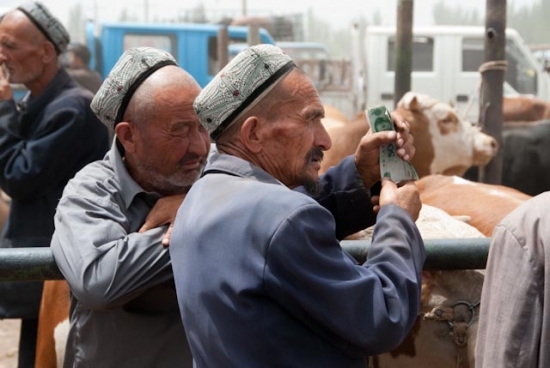
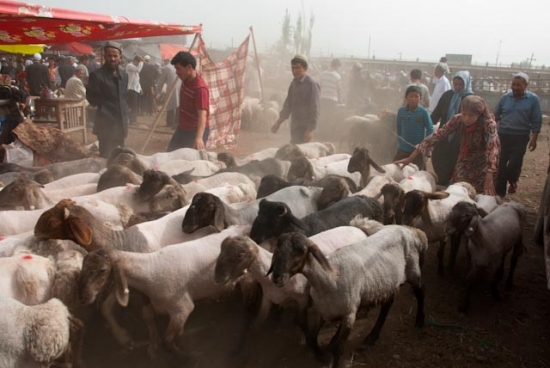
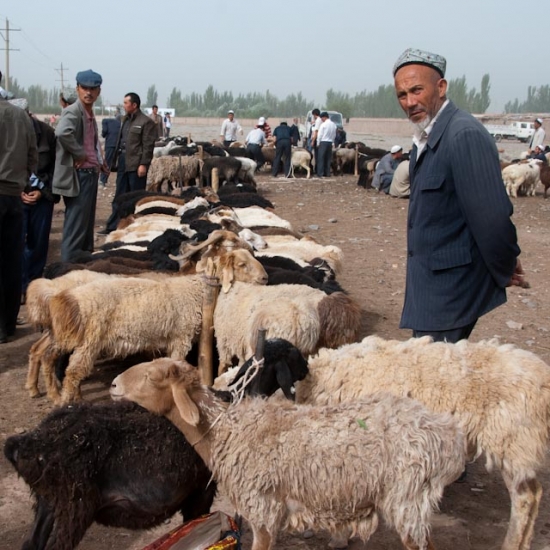
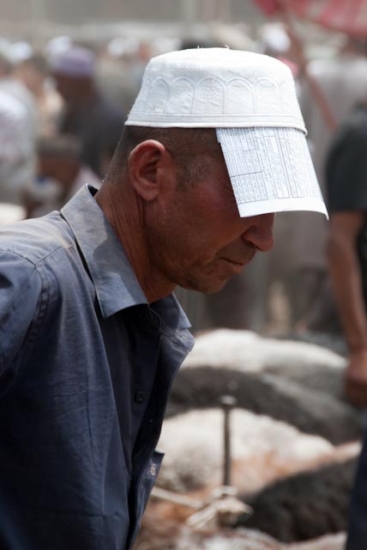
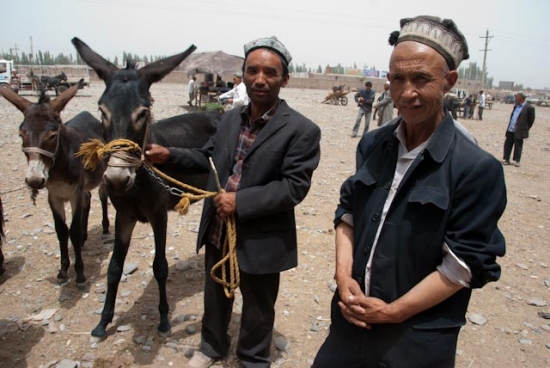
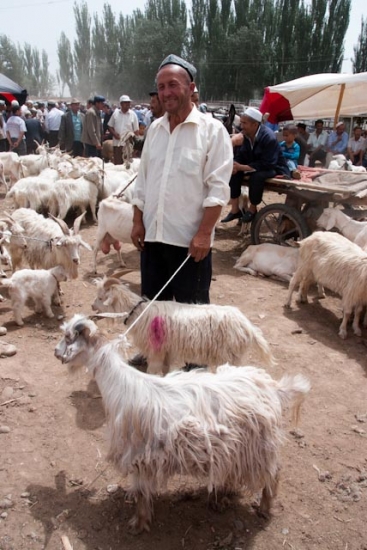
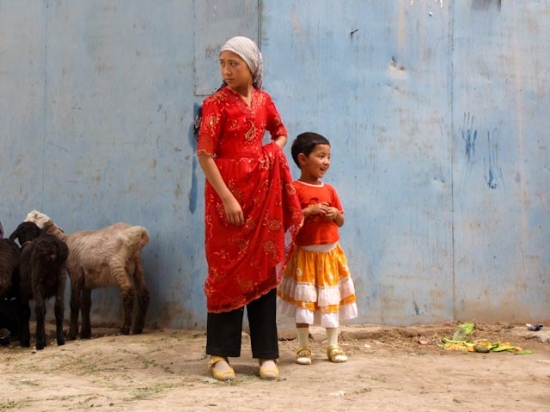
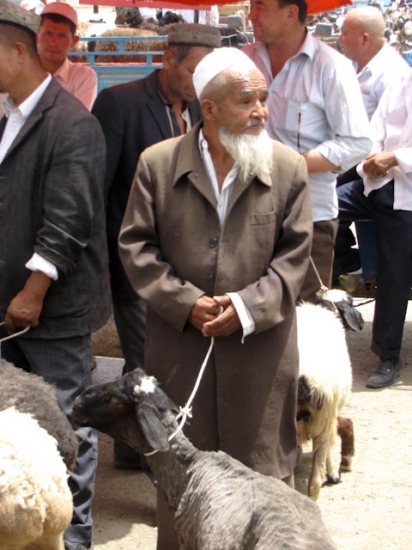
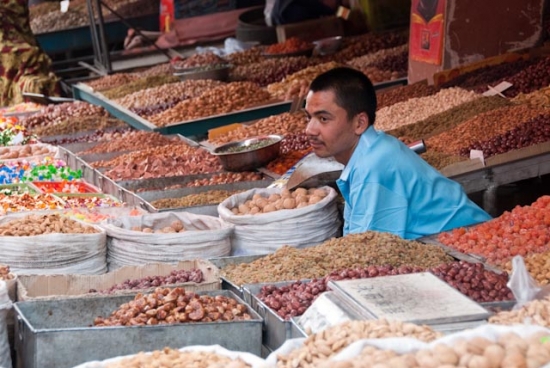
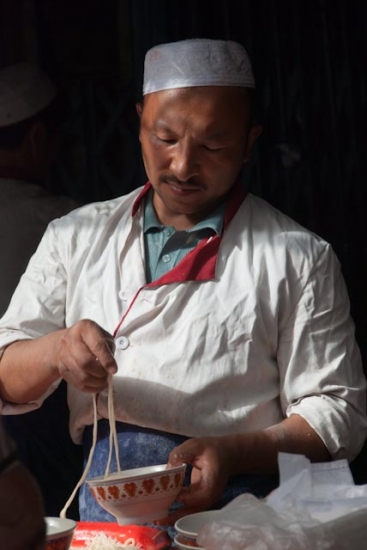
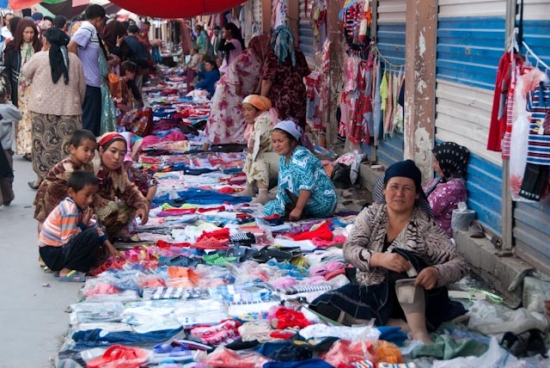
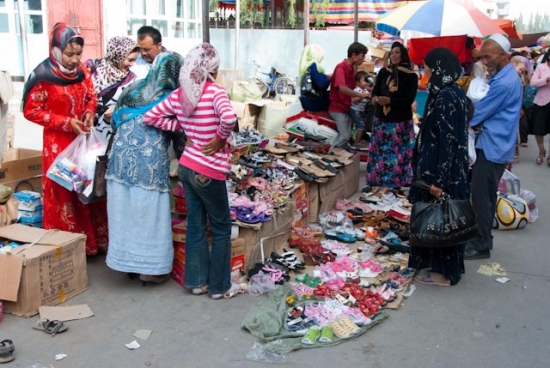
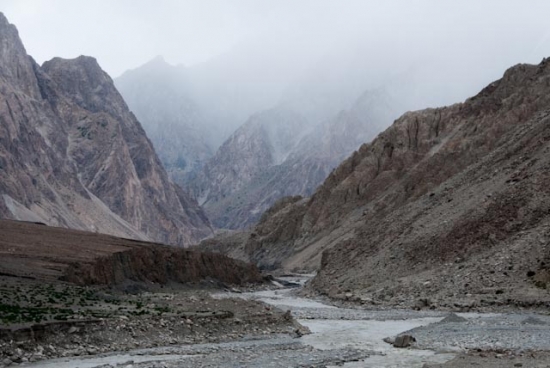
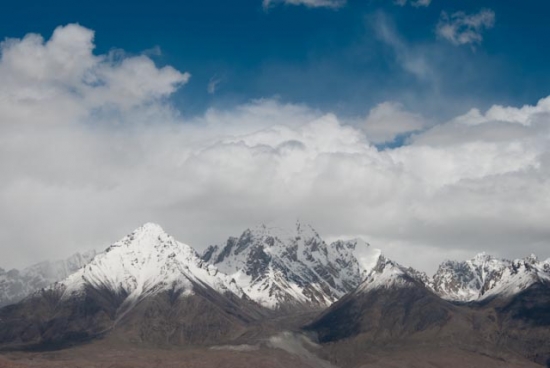
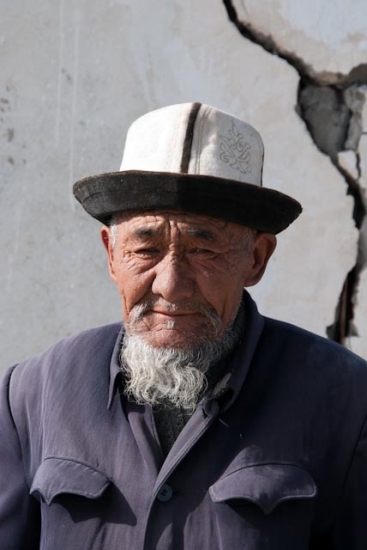
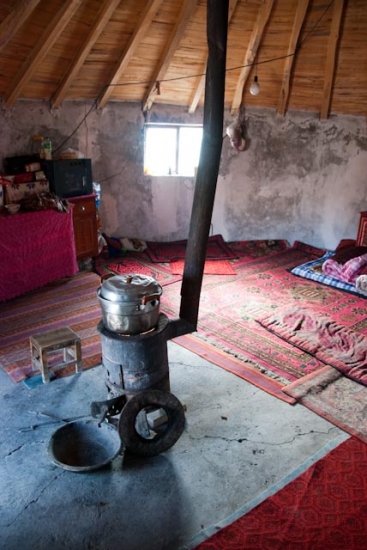
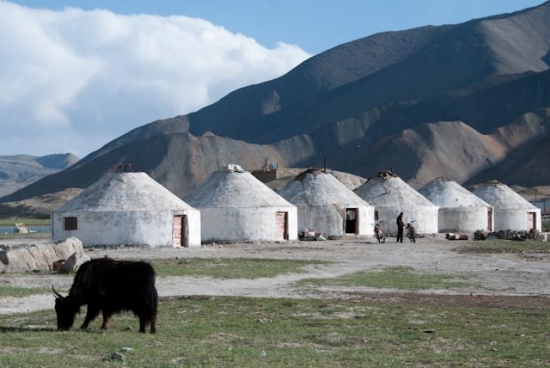
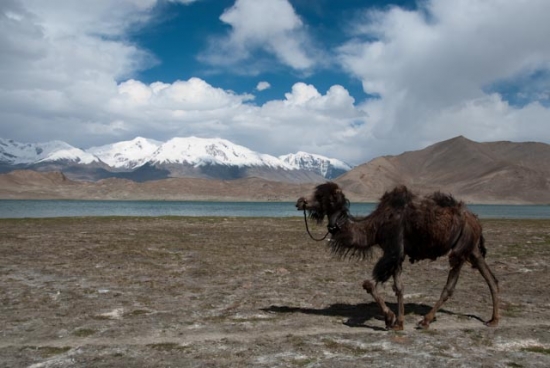
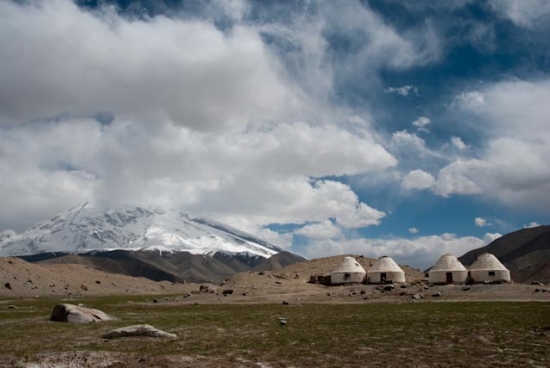
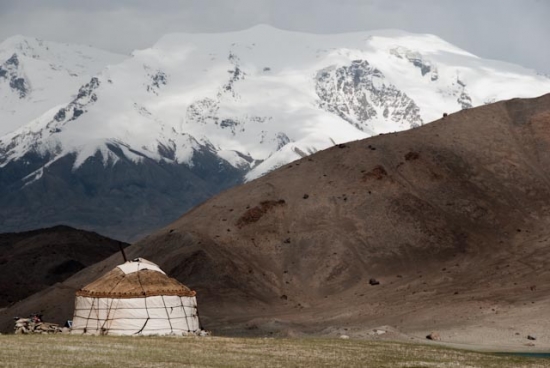
2 comments so far
Leave a reply